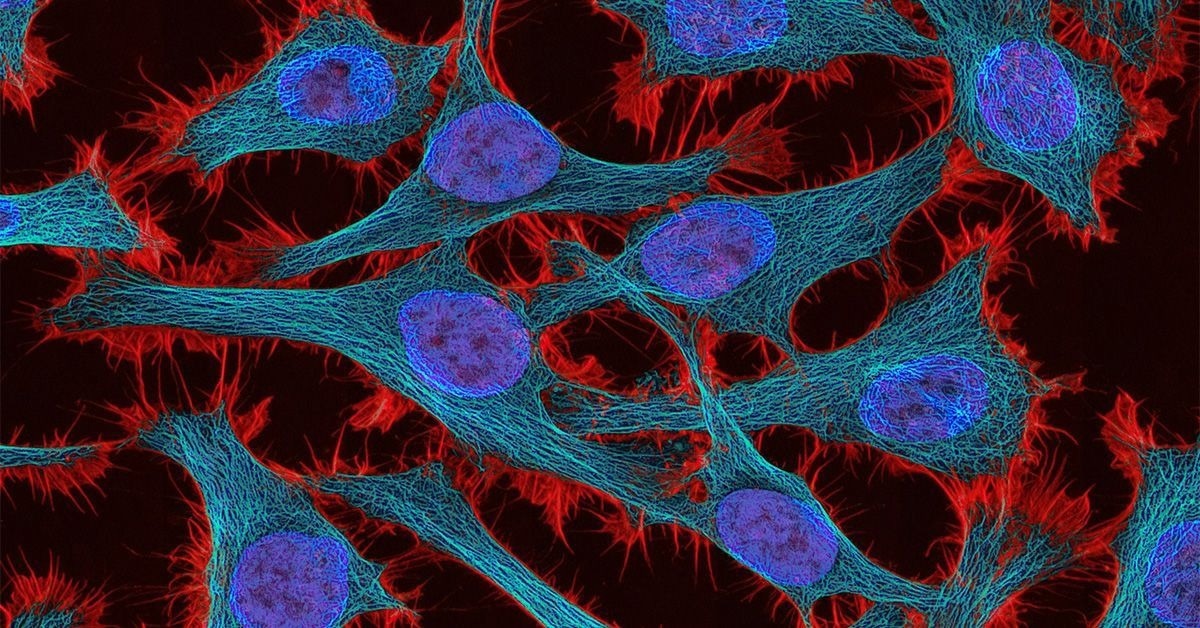One of the main problems confronting cancer researchers is predicting when cancer will defy treatment. Researchers at the University of California San Diego School of Medicine solved this problem in a ground-breaking study that was published on January 18th, 2024, in Cancer Discovery, by using a machine learning algorithm.
 Cervical cancer, shown here at the cellular level, frequently resists treatment. The researchers’ machine learning algorithm could help scientists better understand why this and other forms of cancer resist chemotherapy. Image Credit: National Cancer Institute/Unsplash
Cervical cancer, shown here at the cellular level, frequently resists treatment. The researchers’ machine learning algorithm could help scientists better understand why this and other forms of cancer resist chemotherapy. Image Credit: National Cancer Institute/Unsplash
All cells, including cancer cells, need intricate molecular machinery to reproduce DNA during normal cell division. Most chemotherapies function by inhibiting the DNA replication machinery in rapidly proliferating tumor cells.
While scientists realize that a tumor’s genetic composition has a significant impact on its specific drug response, the huge number of mutations detected inside tumors has made predicting drug resistance difficult.
The new method overcomes this hurdle by investigating how many genetic alterations affect a tumor’s response to medications that inhibit DNA replication. They specifically tested their model on cervical cancer tumors and were successful in projecting responses to cisplatin, one of the most commonly used chemotherapy medications.
The model was able to identify cancers with the highest probability of treatment resistance, as well as much of the underlying molecular machinery that drives treatment resistance.
Clinicians were previously aware of a few individual mutations that are associated with treatment resistance, but these isolated mutations tended to lack significant predictive value. The reason is that a much larger number of mutations can shape a tumor’s treatment response than previously appreciated. Artificial intelligence bridges that gap in our understanding, enabling us to analyze a complex array of thousands of mutations at once.
Trey Ideker, PhD, Professor, Department of Medicine, UC San Diego of Medicine
The underlying intricacy of DNA replication, a process that many cancer drugs target, makes it difficult to comprehend how tumors react to drugs.
Ideker added, “Hundreds of proteins work together in complex arrangements to replicate DNA. Hundreds of proteins work together in complex arrangements to replicate DNA.”
Using mutations found in these genes as the starting point for their machine learning model, the researchers trained their machine learning model on the standard collection of 718 genes that are frequently used in clinical genetic testing for cancer categorization.
Following its training with publicly available medication response data, the model identified 41 molecular assemblies, or consortiums of cooperating proteins, where genetic changes impact the effectiveness of drugs.
“Cancer is a network-based disease driven by many interconnected components, but previous machine learning models for predicting treatment resistance don’t always reflect this. Rather than focusing on a single gene or protein, our model evaluates the broader biochemical networks vital for cancer survival,” Ideker noted.
The researchers tested their model on cervical cancer, where about 35% of tumors remain after therapy after they had trained it. Tumors that responded well to treatment were reliably identified by the algorithm and were linked to better patient outcomes. Additionally, the model successfully identified cancers that would be difficult to cure.
Even more, by identifying the protein assemblies causing treatment resistance in cervical cancer, the model helped clarify its decision-making process in addition to predicting treatment responses. The capacity to understand the model’s logic, according to the researchers, is essential to both the model’s effectiveness and the development of reliable AI systems.
Ideker further added, “Unraveling an AI model’s decision-making process is crucial, sometimes as important as the prediction itself. Our model's transparency is one of its strengths, first because it builds trust in the model, and second because each of these molecular assemblies we’ve identified becomes a potential new target for chemotherapy. We are optimistic that our model will have broad applications in not only enhancing current cancer treatment, but also in pioneering new ones.”
Xiaoyu Zhao, Akshat Singhal, Sungjoon Park, JungHo Kong, and Robin E. Bachelder, all of UC San Diego, are co-authors of the study.
The National Institutes of Health (NCI U54 CA274502 and P41 GM103504), Merck KGaA, and the Eric and Wendy Schmidt AI in Science Postdoctoral Fellowship, a Schmidt Futures program supported the study.
Journal Reference:
Zhao, X., et. al. (2023) Cancer mutations converge on a collection of protein assemblies to predict resistance to replication stress. Cancer Discovery. doi:10.1158/2159-8290.CD-23-0641